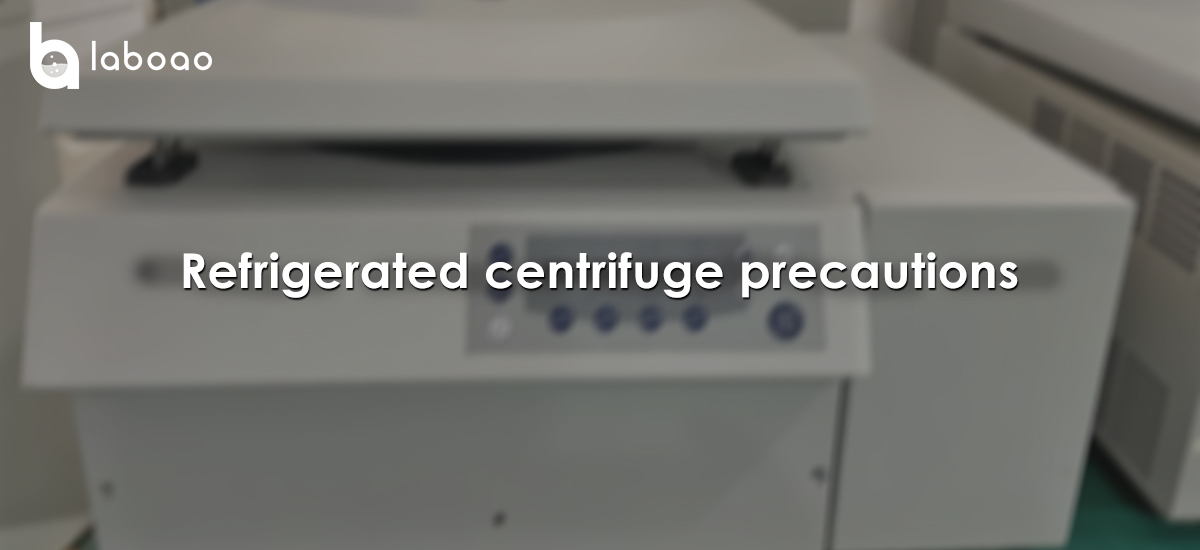
Classification of large-capacity refrigerated centrifuges:
1. High speed refrigerated centrifuge: The speed can reach more than 10,000 rpm. In addition to the performance and structure of the low-speed refrigerated centrifuge, the angular rotors used in the high-speed centrifuge are made of titanium alloy and aluminum alloy. The centrifuge tube is a hard plastic product with a polyethylene cover. This type of centrifuge is mostly used to collect microorganisms, cell fragments, cells, large organelles, sulfuric acid precipitates, and immune precipitates.
2. Low speed refrigerated centrifuge: The speed generally does not exceed 4,000 rpm, and the maximum capacity is 2-4L. It is the most commonly used laboratory for large-scale primary separation and extraction of biological macromolecules, precipitates, etc. Its rotors are mostly made of aluminum alloy, swing-flat and angle types. The centrifuge tubes are available in hard glass, polyethylene hard plastic and stainless steel tubes. The centrifuge is equipped with a drive motor, timer, regulator (speed indicator) and refrigeration system (temperature adjustable range is -20-+40℃). Rotors of different capacities and different models of speed can be replaced according to the needs of the centrifuged material.
Notes:
1. If the motor of the refrigerated centrifuge often fails to start during use, or the power indicator light is off, check whether the indicator light fuse and the indoor distribution board fuse are blown, and check whether the power cord is in good contact.
2. If the rotor coil of the refrigerated centrifuge is short-circuited or broken, you can use a multimeter to check and rewind the coil. When the rotor is in use, the centrifuge tube may rupture, sample leakage, and rotor damage due to metal fatigue, overspeed, overstress, chemical corrosion, improper selection, unbalanced rotors during use, and temperature out of control. For the above situations, the operator is mainly required to master the operating procedures, correctly select suitable centrifuge tubes and centrifuge rotors, pay attention to strictly control each step of the operation sequence, minimize unnecessary human damage, and use it within the safety factor and warranty period of the rotor.
3. During the operation of the refrigerated centrifuge, if any abnormal phenomenon occurs, it should be stopped immediately, and it must not be forced to operate, so as to avoid unnecessary losses or accidents.
4. The bearing of the laboratory refrigerated centrifuge is damaged or the rotation is blocked. The bearing lacks oil or there is a lot of dirt in the bearing, which increases the friction resistance. The motor cannot reach the rated speed. The bearing should be cleaned or replaced in time. There is a layer of oxide on the surface of the commutator, and even burning it into unevenness or the brush does not match the outer edge of the commutator, which can also reduce the speed. The commutator and brush should be cleaned to make good contact.
5. If the oil pressure is too high and the main engine cannot start, please check whether the oil circuits are blocked, especially whether the throttling holes are unobstructed. If they are not unobstructed, they should be cleaned to make them unobstructed.
6. One of the reasons for the poor startup and refrigeration effect of the refrigerated centrifuge is that the power supply is not connected. The power supply and fuse should be checked separately. The voltage is too low and the safety device failure can also prevent the refrigerator from starting.